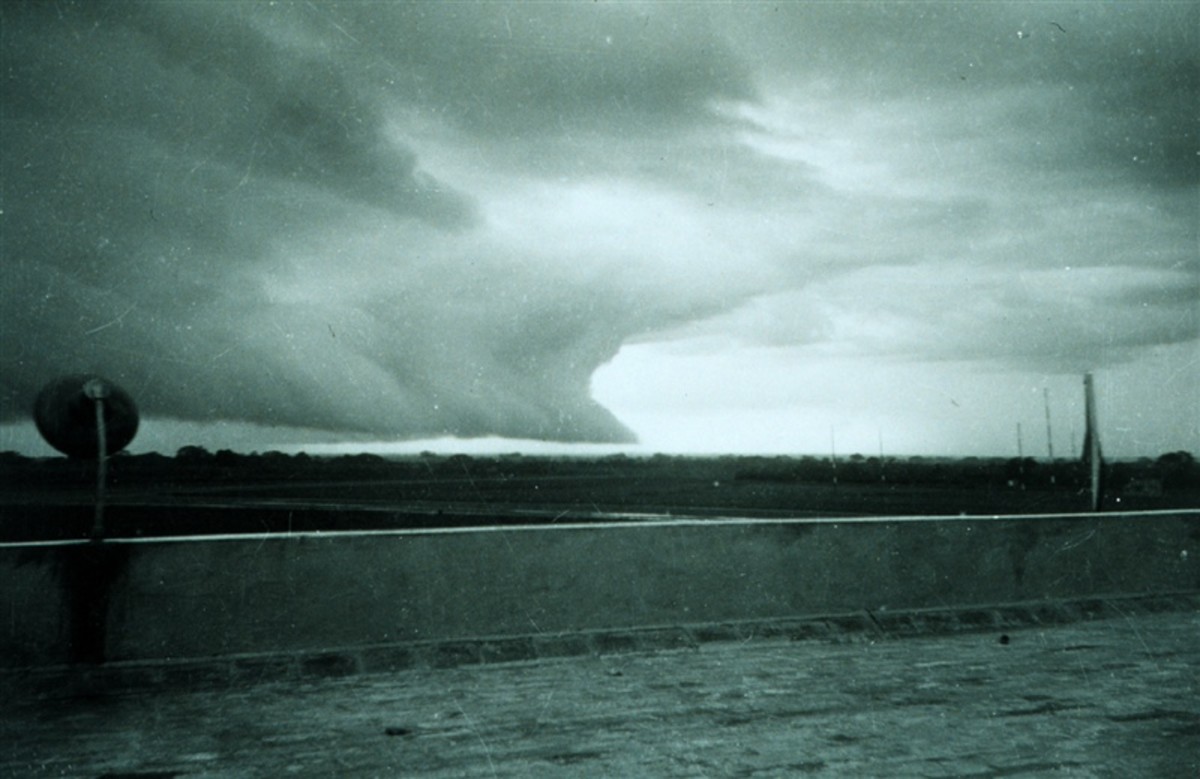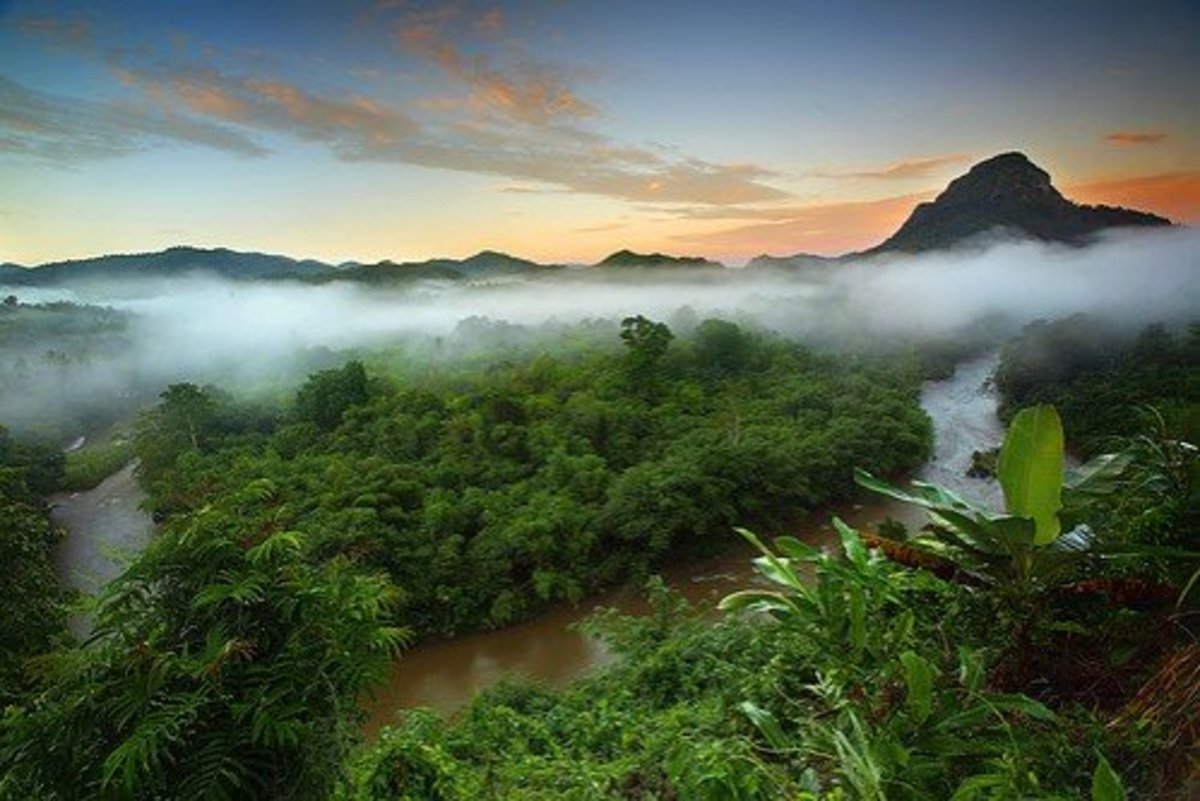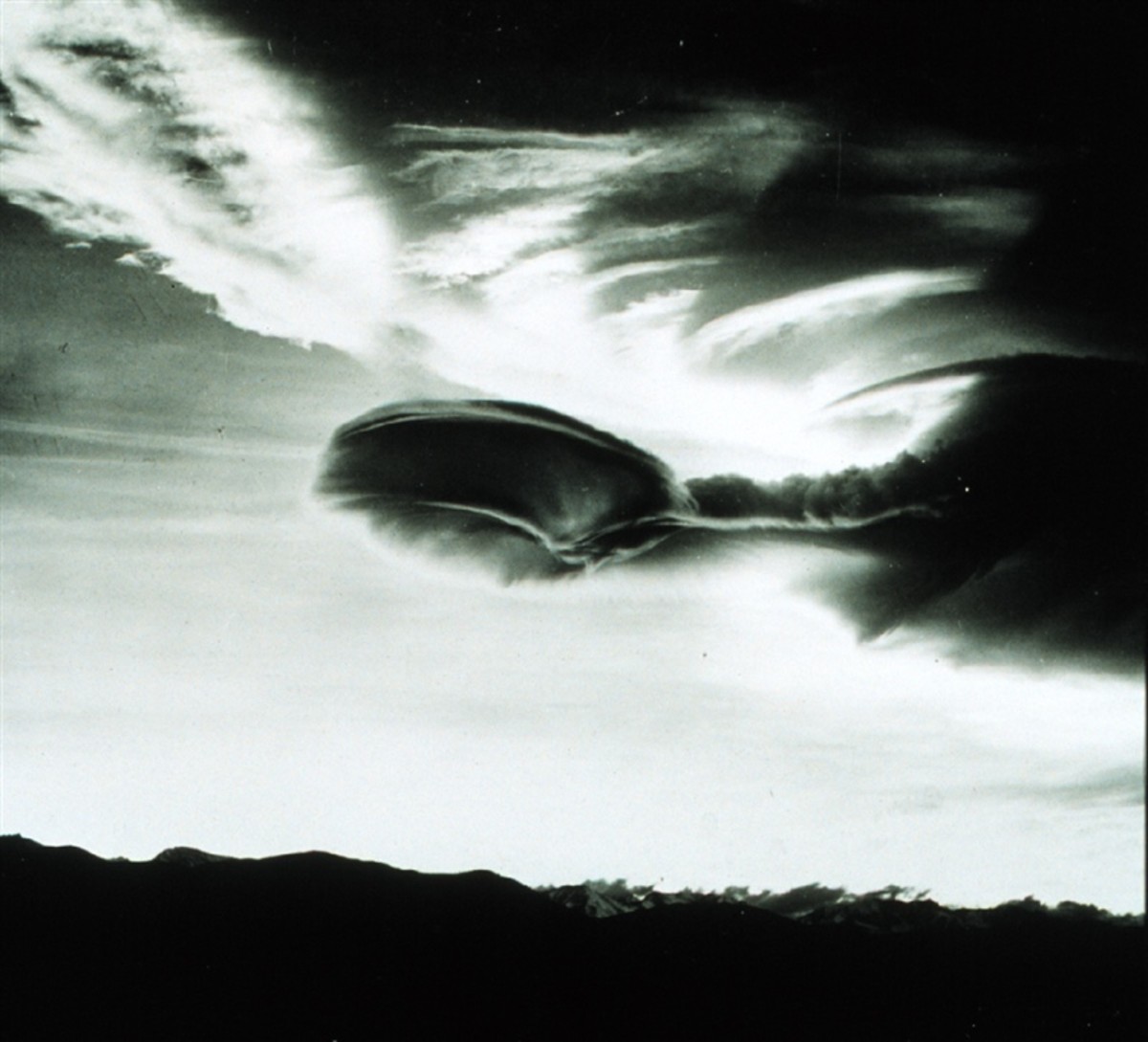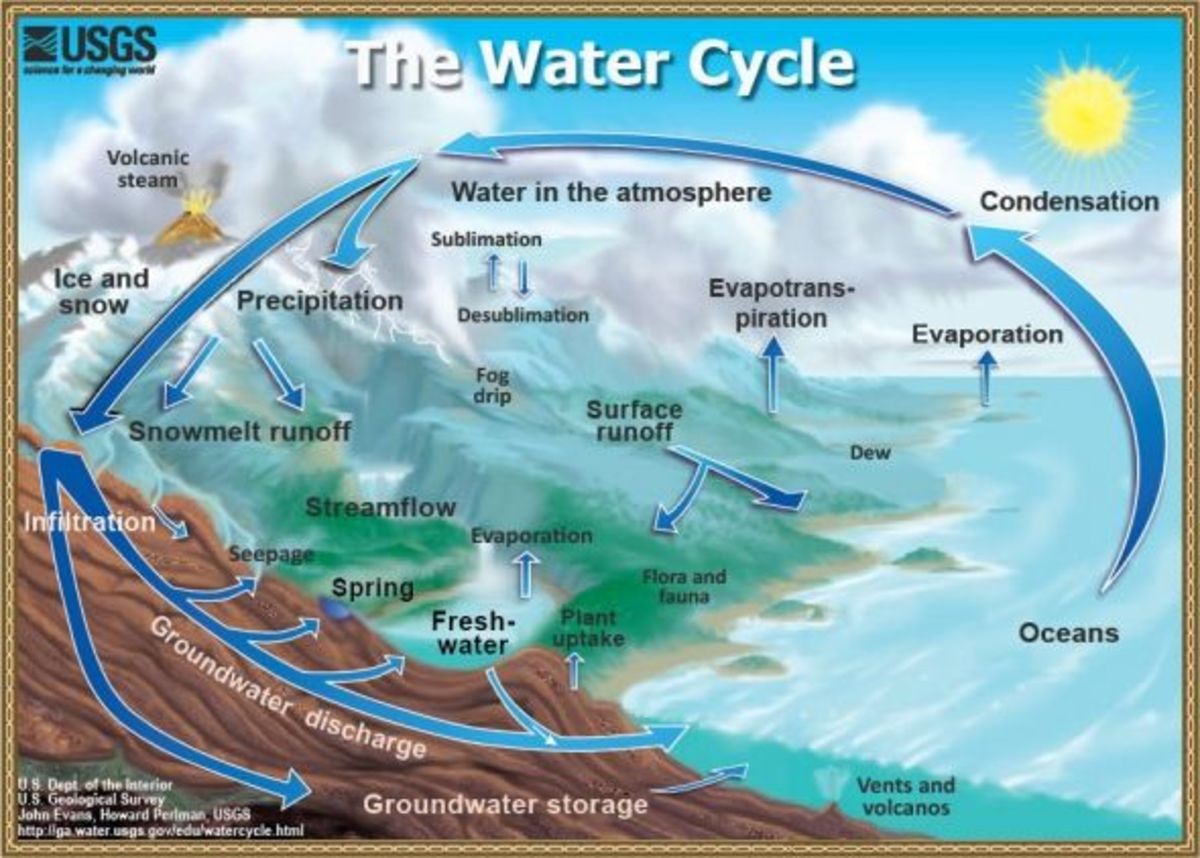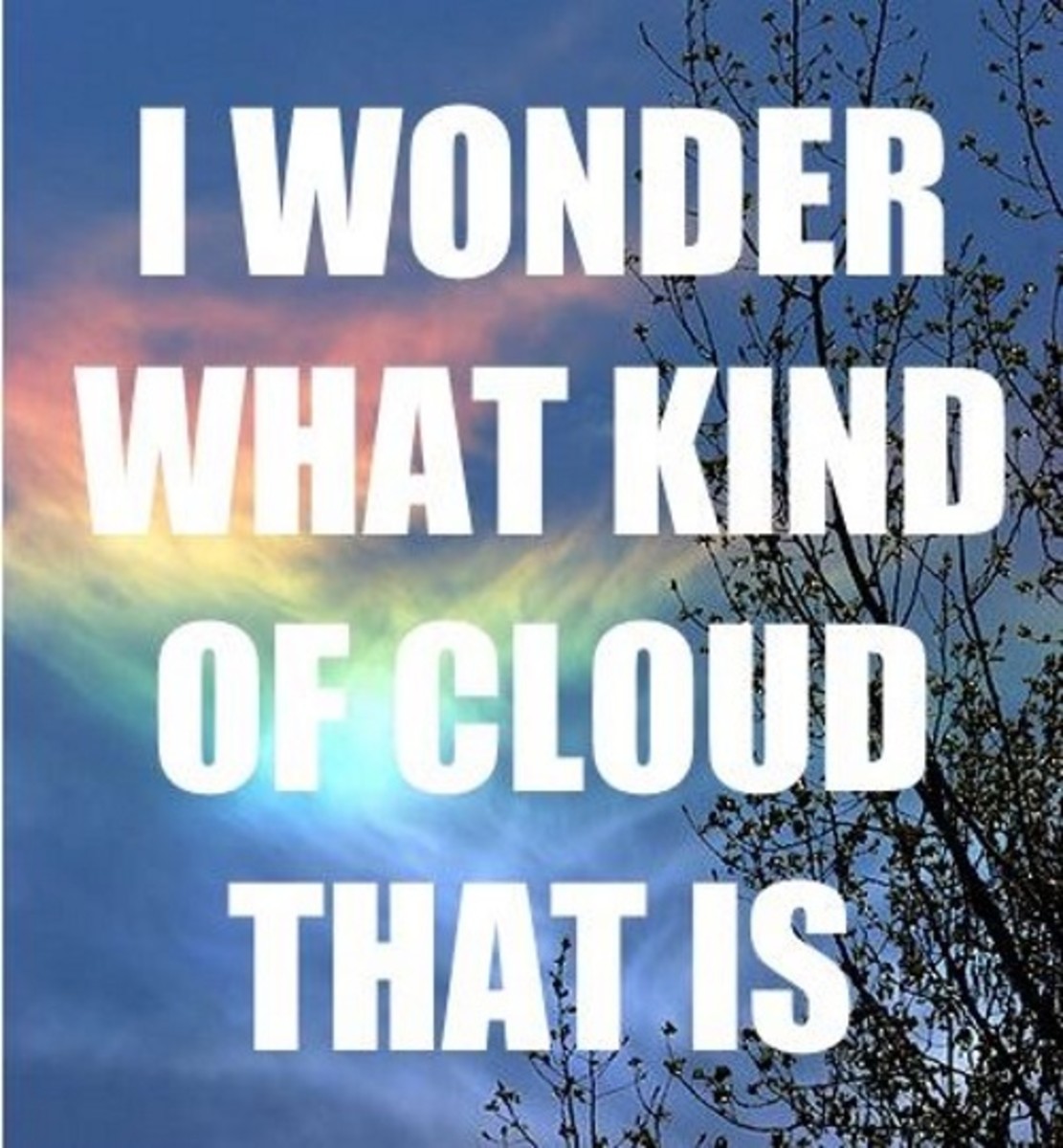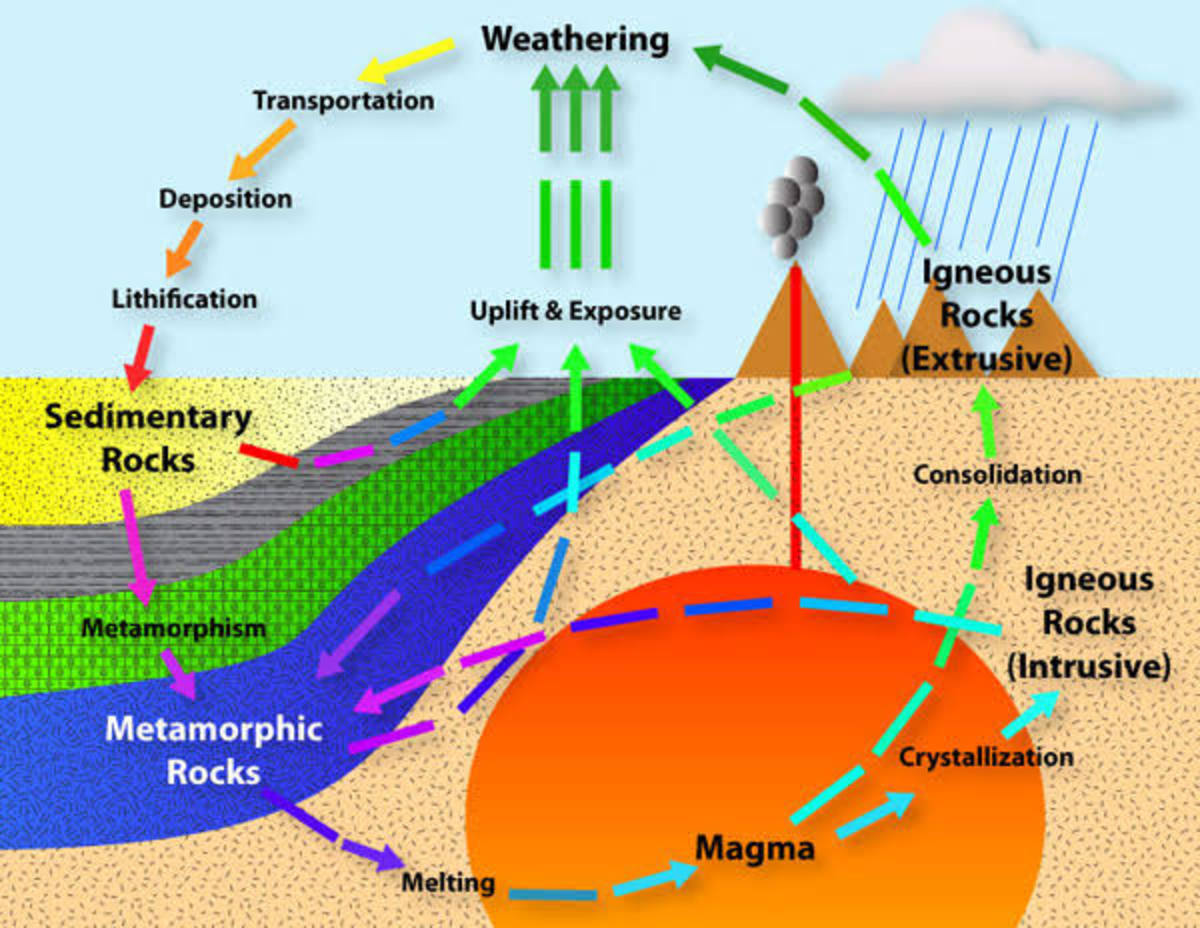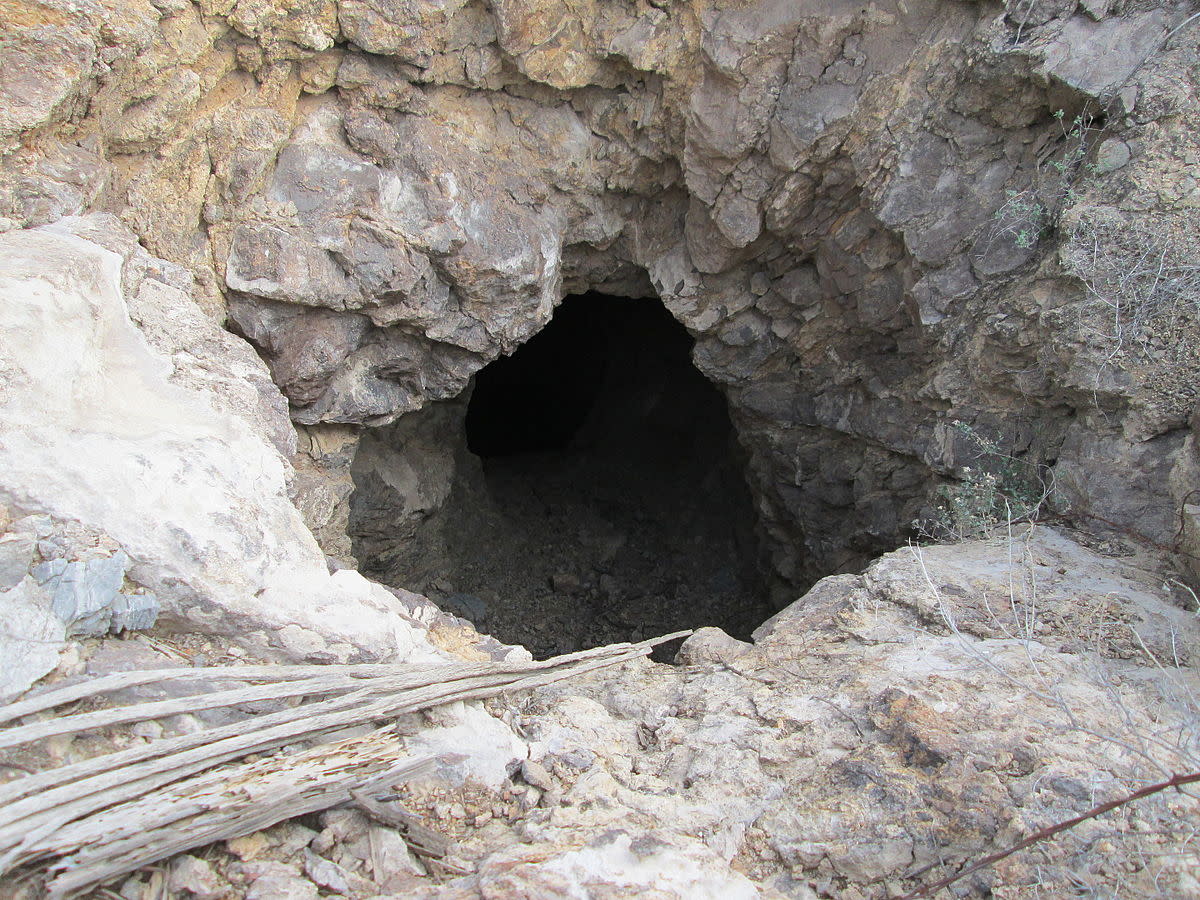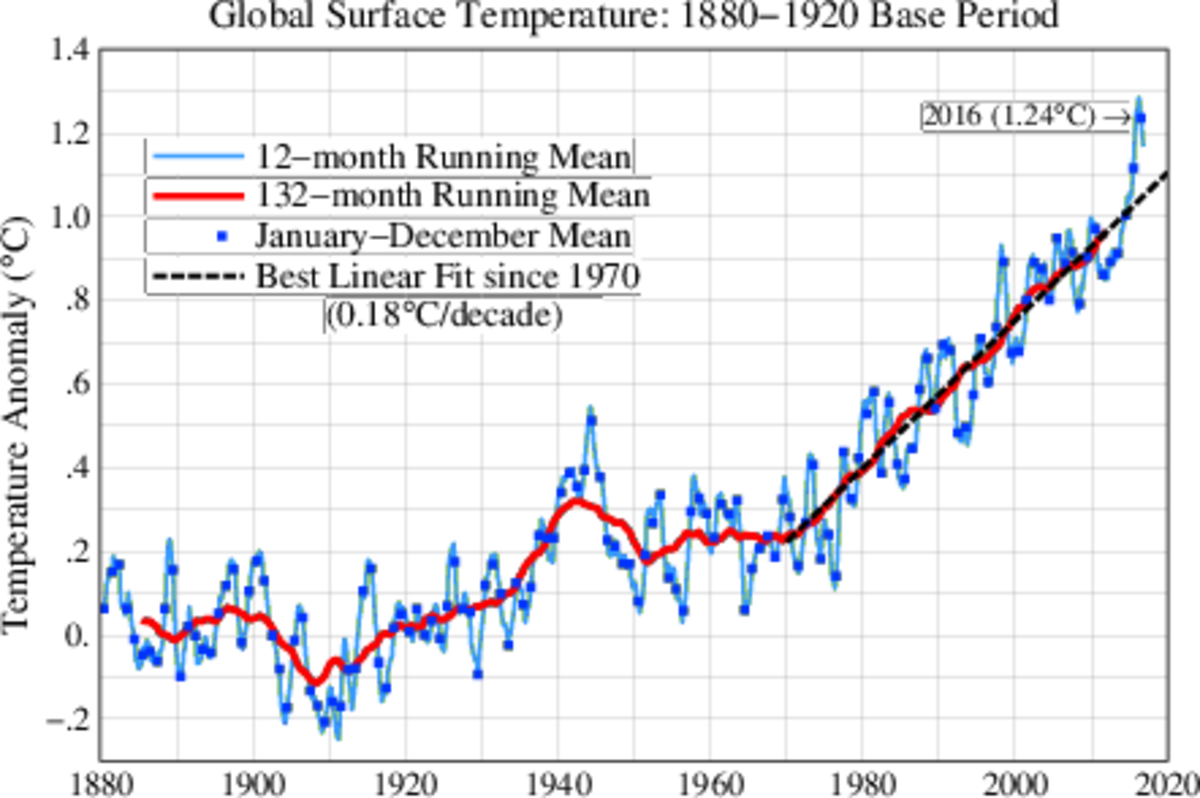The Water Cycle Phases
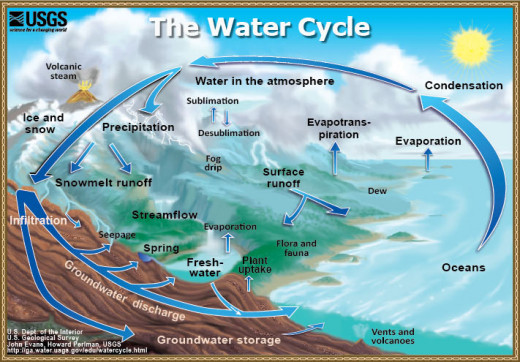
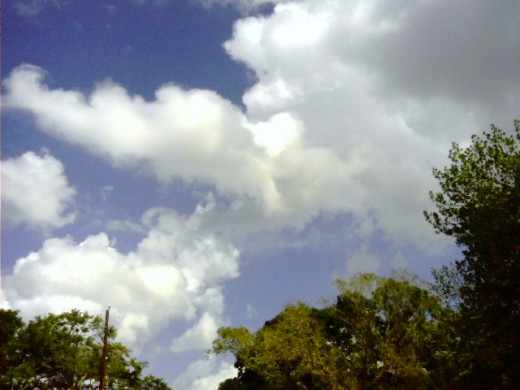
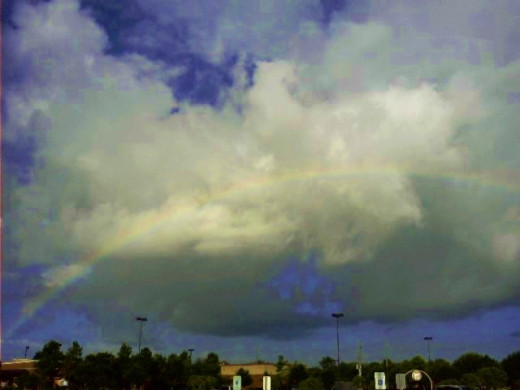
By Joan Whetzel
Earth's water cycle, like a circle or a ring, has no beginning or end. It is a dynamic process for taking the water from the oceans, rivers and lakes up to the clouds, then falls back to the earth, and runs back to the oceans, rivers and lakes again. It changes the water from a liquid to a vapor to ice and back into water. This whole process connects the land, oceans and atmosphere of the Earth, affecting the climate and the daily weather through the phases of evaporation, condensation, precipitation and collection. So, what is the water cycle and how does it work?
What Is The Water Cycle?
The way it works is that the sun heats up the water in the oceans, rivers and lakes, causing it to evaporate. The evaporated water hits the colder temperatures in the upper layers of the atmosphere where it condenses into clouds. Once the clouds become too heavy with water, they release the frozen water as precipitation which falls onto the land. The runoff collects back into the rivers, lakes and oceans. The phases of the water cycle are called 1. evaporation, 2. condensation, 3. precipitation, and 4. collection
1. Evaporation
Evaporation turns the Earth's water (rivers, lakes, and oceans) into the vapor, thanks to the heating of the sun. This vapor - steam or humidity - rises up into the upper atmosphere. A smaller amount of water is evaporated out of the soil or is sweated off of the plants in the form of evapo-transpiration. That's where the plant's moisture comes to the surface of the leaves (like when people sweat) and then evaporates like any other moisture.
2. Condensation
As the evaporated water reaches the higher altitudes of the atmosphere, it encounters colder temperatures. The cold air condenses the water vapor, turning it into tiny ice crystals. From the ground, all we see are the clouds. The clouds look white because the sun reflects off the ice crystals.
3. Precipitation
At some point, the clouds become over-laden with condensed water vapor, that it can't hold anymore. The cloud is forced to release this excess water in the form of precipitation. Precipitation includes rain, ice, snow, sleet and hail. This precipitation feeds the land masses with fresh water.
4. Collection
Most of the precipitation soaks into the land. However, the land cannot hold all of the water created by the precipitation. Some of it runs off in smaller water ways (bayous, rivulets, streams), collecting back into the rivers, lakes and oceans. And the cycle "begins" all over again, with the evaporation phase.
Water Cycle Activities from NOAA
Check out the items on the left hand side of the "Water Cycle" page from NOAA at: http://www.education.noaa.gov/Freshwater/Water_Cycle.html There are several teacher resources. Just point your mouse and click.
· Water Cycle Game
· Water Cycle Wheel
http://www.srh.noaa.gov/jetstream/atmos/images/hydro_wheel.pdf
· 5 Simple Water Cycle Activities.
http://www.erh.noaa.gov/ctp/hydro/cycle/activities.htm
Resources
USGS. The Water Cycle, a Quick Summary.
http://ga.water.usgs.gov/edu/watercyclehi.html
Kid Zone. The Water Cycle.
USGS. Summary of the Water Cycle.
http://ga.water.usgs.gov/edu/watercyclesummary.html
NASA. Water Cycle.
http://science.nasa.gov/earth-science/oceanography/ocean-earth-system/ocean-water-cycle/
NOAA Education Resources. Water Cycle.

